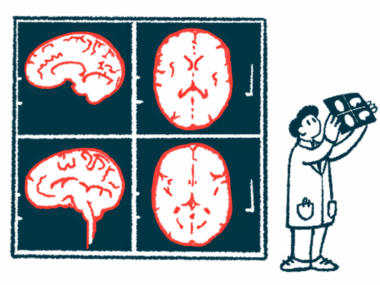Top 10 Multiple Sclerosis Stories of 2019
Written by |

Throughout 2019, Multiple Sclerosis News Today brought you daily coverage of the latest scientific findings, treatment developments, and clinical trials related to multiple sclerosis (MS).
We look forward to reporting more news to patients, family members, and caregivers dealing with MS during 2020.
Here are the top 10 most-read articles of 2019, with a brief description of what made them relevant for the MS community.
No. 10 – “Single Dose of CD45-ADC Resets the Immune System, Delays the Onset of MS in Mice”
A single dose of CD45-ADC, an investigational targeted therapy being developed by Magenta Therapeutics and Heidelberg Pharma for different autoimmune diseases, was capable of restoring the normal function of the immune system in mice models of MS, according to a study presented at the American College of Rheumatology (ACR) Annual Meeting. Combined with a transplant of a healthy immune system, the treatment delayed disease onset and halted progression. The potential treatment works by delivering amanitin — a natural poison — to overactive immune cells by targeting the protein CD45, which is found on these cells’ surface. By doing so, the compound specifically depletes the body of abnormally active immune cells. The plan is to gather more data to be able to move CD45-ADC into clinical trials. In the future, this potential treatment may deliver a “one-time, curative immune reset” to patients, company executives say.
Viral infections affecting the brain of mice early in life could worsen classic symptoms of MS, including brain lesions, later in life and at sites where the virus had resided before being cleared. Those early infections ‘imprinted’ a chronic inflammatory signature made of brain-resident immune T-cells, which produced a signaling molecule called CCL5. Blocking CCL5 using OB-002, an experimental treatment by Orion Biotechnology Canada, prevented the formation of brain lesions in a mice models of MS. The study provides clues on the potential link between viral infections in childhood and the risk of later developing MS, and offers “a clear rationale” to move OB-002 forward as a candidate therapy for the disease, researchers said.
No. 8 – “Chi3l3 Protein Favors Production of Myelin Repair Cells, Mouse Study Determines”
An early study in mice found that a protein marker of activated immune cells — called Chi3l3 — is key for the production of myelin-forming cells, called oligodendrocytes, and may become a target to boost myelin repair in MS. Myelin is the fatty substance that protects nerve cells and enables them to conduct nerve impulses, and which is destroyed in MS. Chi3l3 was seen to play a central role in the body’s capacity to produce new oligodendrocytes. It sparks the differentiation of neural stem cells into oligodendrocytes, promoting the repair and replenishment of damaged myelin. Specific proteins and cellular pathways were identified as the underlying factors behind Chi3l3’s remyelination effects. Based on this knowledge, researchers hope to “develop a new generation of drugs that can be used in the treatment of multiple sclerosis.”
No. 7 – “Neuronal Circuit Likely Behind Chronic Itch in MS and Other Diseases Identified”
A study in mice identified the nerve cell circuits as likely underlying the unpleasant and persistent itching sensation that afflicts some people with MS or other conditions. Although this discovery is preliminary, the work may lead to specific treatments for chronic itch. According to the team, a mechanical itch — that caused by extra sensitivity to, for instance, light brushing or poking against the skin — starts with the activation of specialized sensory cells found in skin, known as Toll-like receptor 5-positive low-threshold mechanoreceptors. These cells react to a light touch, passing the message along to Ucn3 interneurons in the spinal cord. Another type of neuron — called inhibitory interneurons — work as the gatekeepers of sensitivity to itch, specifically controlling how much skin “tickling” is needed to cause itching.
No. 6 – “#ECTRIMS2019 – Longer DMT Use and Female Sex Seen to Protect Against SPMS Conversion”
Women with MS, those living with relapsing disease for a considerable stretch of time, and those on longer use of disease-modifying therapies (DMTs) are less likely to transition to secondary progressive multiple sclerosis (SPMS), according to a registry-based study presented at the 35th Congress of the European Committee for Treatment and Research in Multiple Sclerosis (ECTRIMS). Conversely, patients whose disease starts after age 40, have a multifocal onset (multiple lesions and symptoms), greater disability at disease onset, and repeated relapses are more likely to progress to SPMS. Researchers analyzed data from 19,318 people with relapsing-remitting MS (RRMS) enrolled in the Italian MS Registry, and assessed the time they took to transition to SPMS. They also measured the time from SPMS onset to reach an irreversible disability EDSS score of 6 (inability to walk 100 meters without an aid, like a cane). Female sex, a longer duration of the relapsing phase, and longer exposure to DMTs were all protective factors against transition, suggesting that “a timely and continuous DMT exposure reduces the risk of conversion.”
No. 5 – “Neurological Disease’s Progression Slows with Lowering of Iron Load in Brain, Study Finds”
Toxic buildup of iron in the brain is associated with MS and other neurological diseases. In a Phase 3 clinical trial, oral treatment with deferiprone, a compound that binds to iron and removes it from the bloodstream, was seen to reduce the accumulation of iron in the brain and slow the progression of a severe neurodegenerative disorder called pantothenate kinase-associated neurodegeneration (PKAN), while appearing to be safe. These results may also be relevant to MS and other disorders linked with iron accumulation in the brain.
No. 4 – “Active Form of Vitamin D Can Regulate Immune Responses in Diseases, Including MS, Study Shows”
A product of active vitamin D, called 1,25-dihydroxyvitamin D3, can help “teach” immune T-cells not to mistakenly attack and destroy the body’s own cells, and avoid their overactivation. While low vitamin D levels are known to be a significant risk factor for the development of autoimmune diseases, this study unveils a possible way in which vitamin D prevents the self-injuring immune reactions involved in autoimmune diseases such as MS. It may do so by reshaping the genetic program of another type of immune cell, called dendritic cells, that are involved in the “teaching process” of T-cells. By promoting the production of a surface protein called CD31, active vitamin D appears to trigger dendritic cells to inhibit T-cell mediated autoimmune reactions. This research points to a potential way of attenuating autoimmune diseases by targeting CD31.
No. 3 – “Study Identifies Possible Genetic Causes of MS”
Genetic analysis of 34 European families with a family history of MS — looking for mutations in 132 MS patients, as well as non-affected relatives, using whole-exome sequencing — identified 12 mutations tied to a greater likelihood of developing MS. The affected genes — PLAU, MASP1, C2, NLRP12, UBR2, CTNNA3, NFATC2, RNF213, NCOA3, KCNG4, SLC24A6, and SLC8B1 — are involved in only a few biological pathways related to the immune system and inflammation. This suggests that disruption of these pathways are at the root of MS, and might provide an avenue for exploring treatment strategies. Researchers now plan to develop cell and animal models of these mutations to better understand how they might play a role in MS development.
No. 2 – “Estrogen Promotes Remyelination in Adult Brains of MS Mice, Study Shows”
Treatment with estrogen may promote myelin repair, or remyelination, a study in mice suggests. Treating adult animals with a mimic of estrogen that activates the hormone’s receptor was seen to boost natural remyelination in mice with MS-like disease. Behind such effects appears to be a change in the genetic program of oligodendrocytes (myelin-forming cells found in the brain and spinal cord), tricking them to produce myelin. Production of cholesterol by oligodendrocytes appears to be a key event for remyelination. This also appears to mirror what happens to babies inside their mother’s womb. During embryonic development, oligodendrocytes in the developing fetus are exposed to high levels of estrogen present in maternal blood. Thus, estrogen treatment in adults “may recapitulate normal developmental myelination,” and points to cholesterol metabolism as a potential therapeutic strategy for MS, researchers said.
No. 1 – “Metformin Works to Promote Remyelination in Ways Similar to Fasting, Study Says”
A common diabetes treatment called metformin was seen to promote remyelination in stem cells of elderly rats, suggesting it may be useful in treating MS. Remyelination’s efficiency declines progressively with aging to the point where it eventually fails; this can have important implications for chronic demyelinating diseases such as MS, which extend over decades. In a bid to delay cellular aging and thus preserve myelin repair, researchers tested alternate day fasting and treatment with metformin, a fasting mimetic used to lower blood sugar levels in diabetics. They saw that both strategies could promote the formation of oligodendrocytes (myelin-forming cells) in elderly rats, as well as to improve the repair of lesions. The findings shed light on why cells lose their ability to regenerate myelin, and how this process might be reversed. Researchers hope to move this knowledge forward into humans in the near future.
***
At Multiple Sclerosis News Today, we hope these stories and our reporting throughout 2020 contribute to informing and improving the lives of everyone affected by MS.
We wish all our readers a happy 2020.





